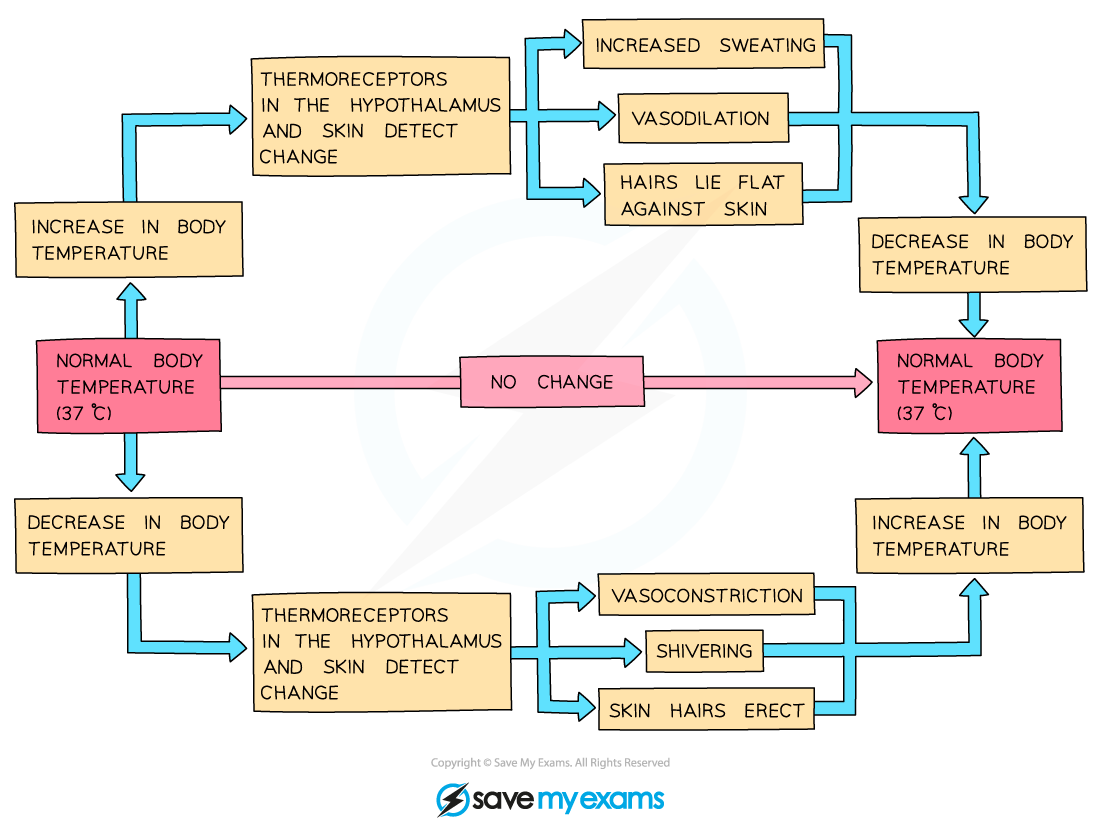Thermoregulation (Edexcel GCSE Biology) : Revision Note
Did this video help you?
Thermoregulation
The human body needs to maintain a temperature at which enzymes work best, around 37°C
Processes such as respiration, release energy as heat, while the body loses heat energy to its surroundings – the energy gained and lost must be regulated to maintain a constant core body temperature
Body temperature is monitored and controlled by the thermoregulatory centre in the hypothalamus (structure within the brain)
The thermoregulatory centre contains receptors sensitive to the temperature of the blood
The skin also contains temperature receptors within the epidermal layer which send nerve impulses to the thermoregulatory centre

Human skin contains structures involved in processes that can increase or reduce heat loss to the surroundings. Temperature receptors are located within the epidermis.
Controlling body temperature
If the body temperature is too high, the hair erector muscles relax, blood vessels dilate (vasodilation) and sweat is produced from the sweat glands
These mechanisms cause a transfer of energy from the skin to the environment, cooling the body down

Responses in the skin when the body temperature is too high and needs to decrease
If the body temperature is too low, hair erector muscles contract, blood vessels constrict (vasoconstriction), sweating stops and skeletal muscles contract (shiver)
These mechanisms reduce heat loss to the surroundings (with skeletal muscle contraction increasing heat released in the body)

Responses in the skin when body temperature is too low and needs to increase
Body Temperature Control Table


Remember homeostasis involves the maintenance of a constant internal environment; temperature control is an example of negative feedback
Examiner Tips and Tricks
You only need to know about the mechanisms of vasodilation and vasoconstriction for higher tier!

You've read 0 of your 5 free revision notes this week
Unlock more, it's free!
Did this page help you?
